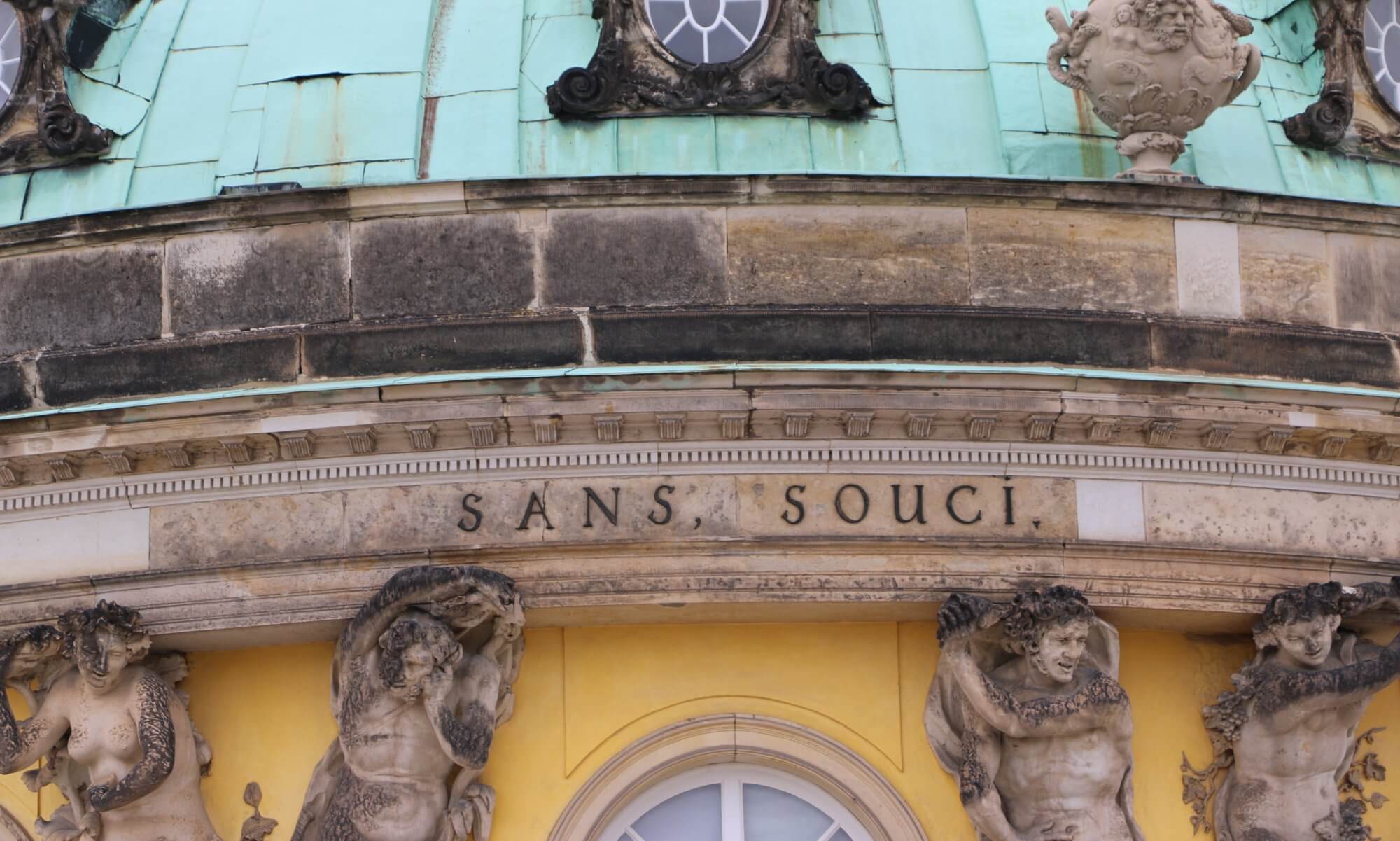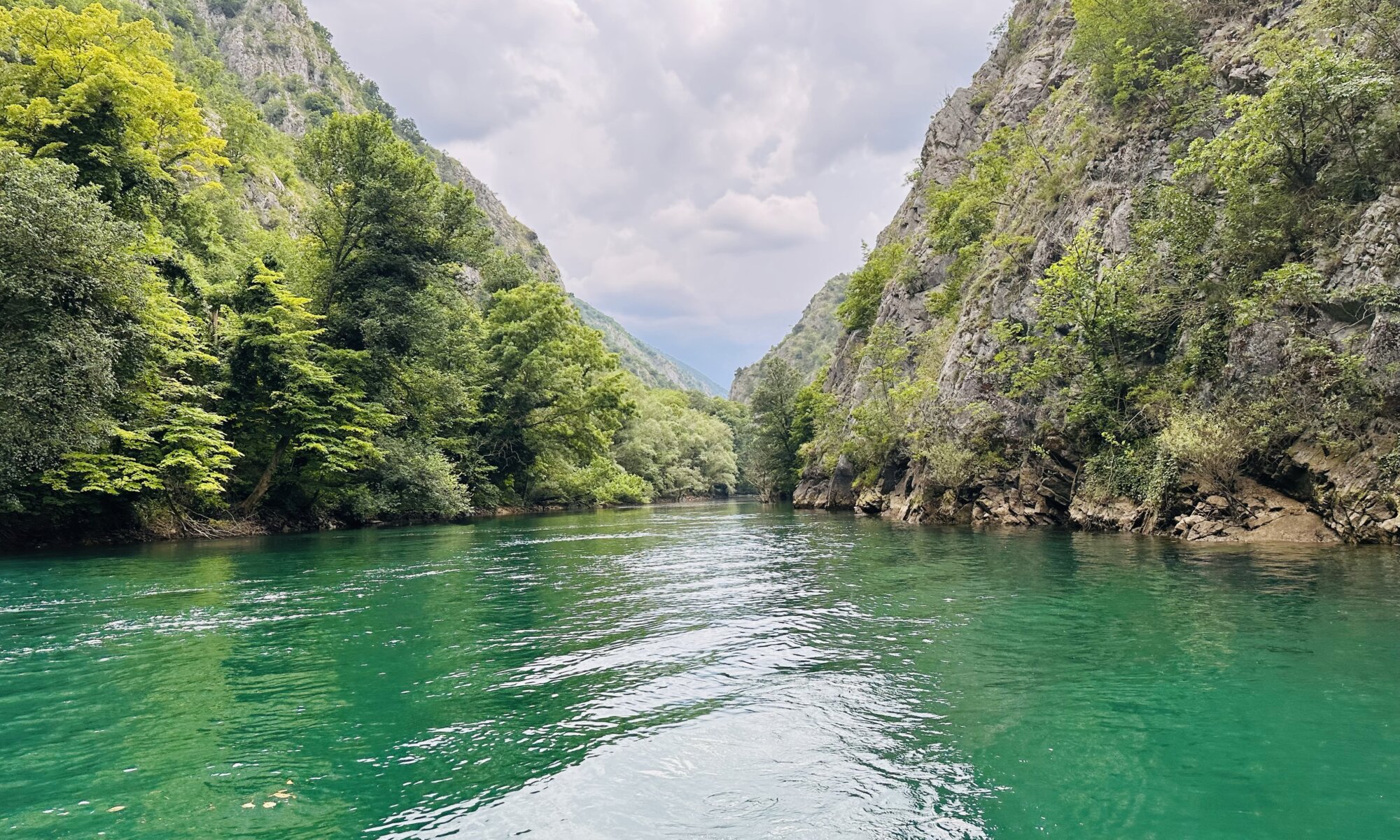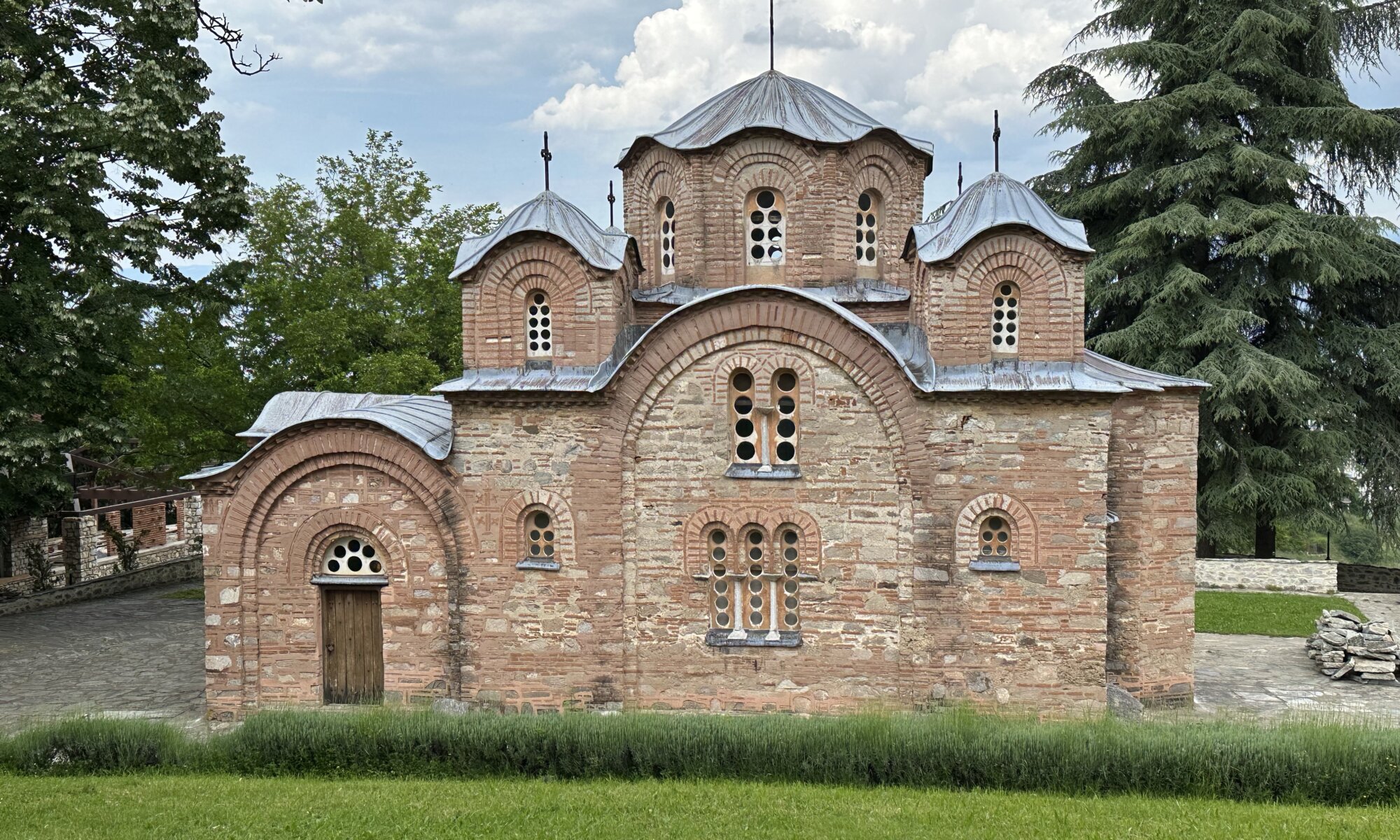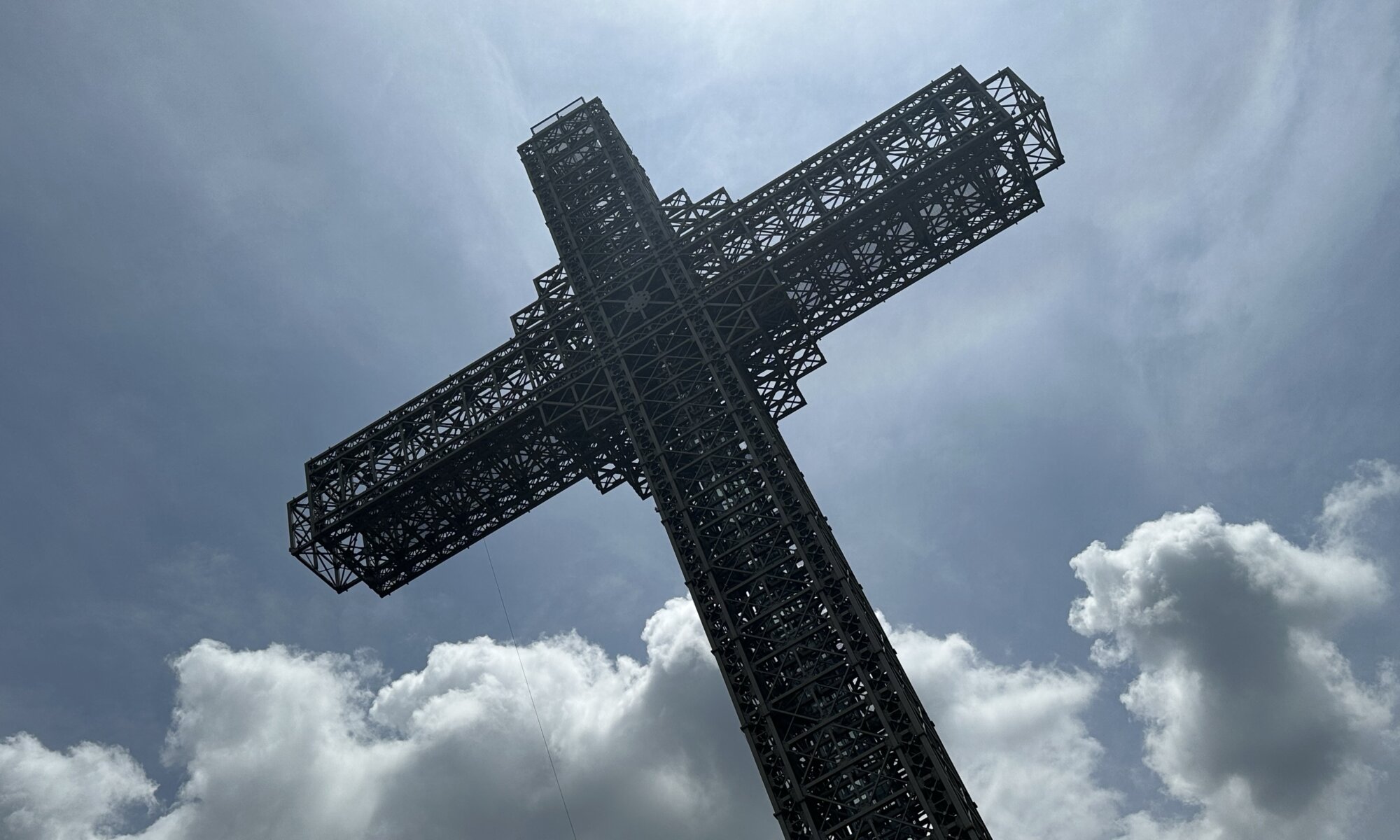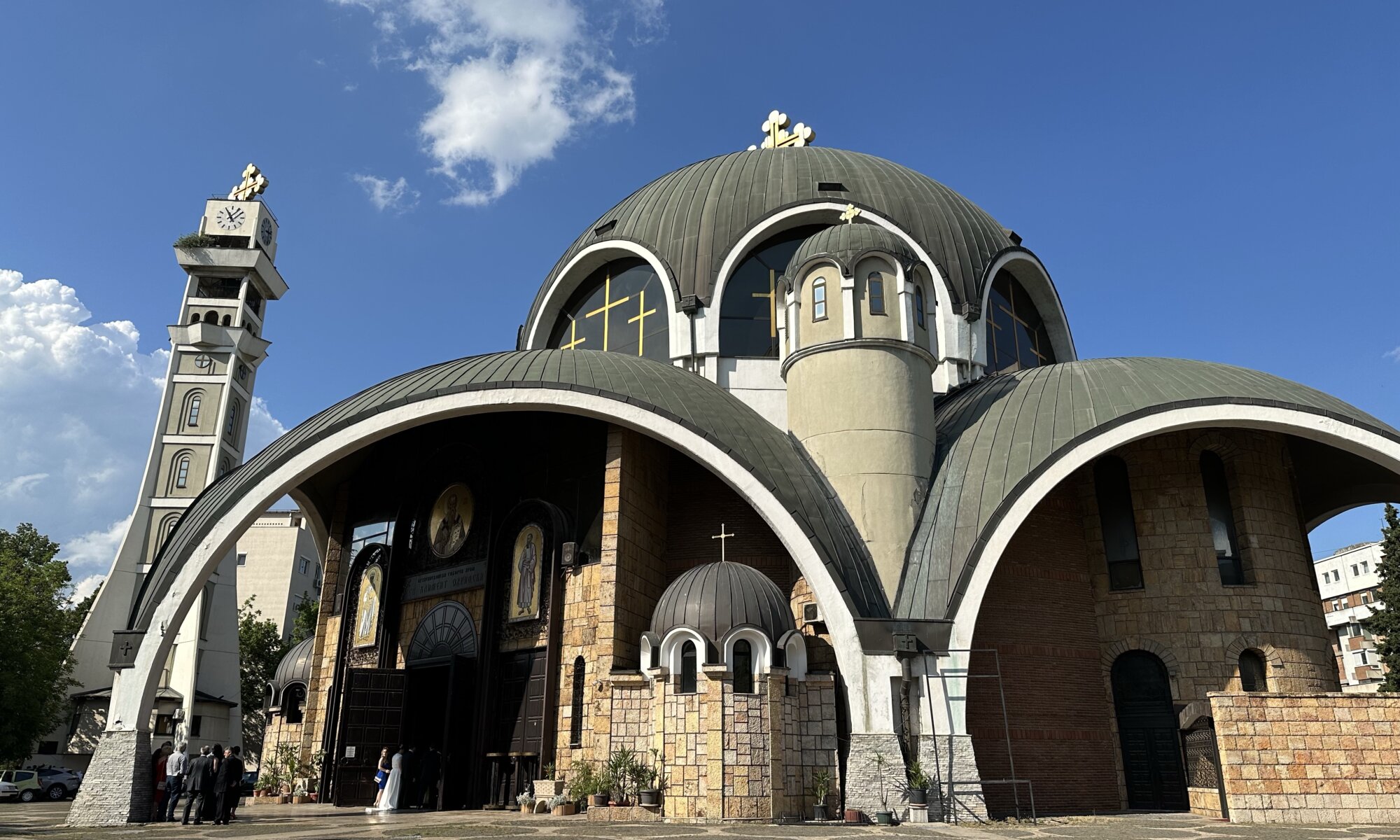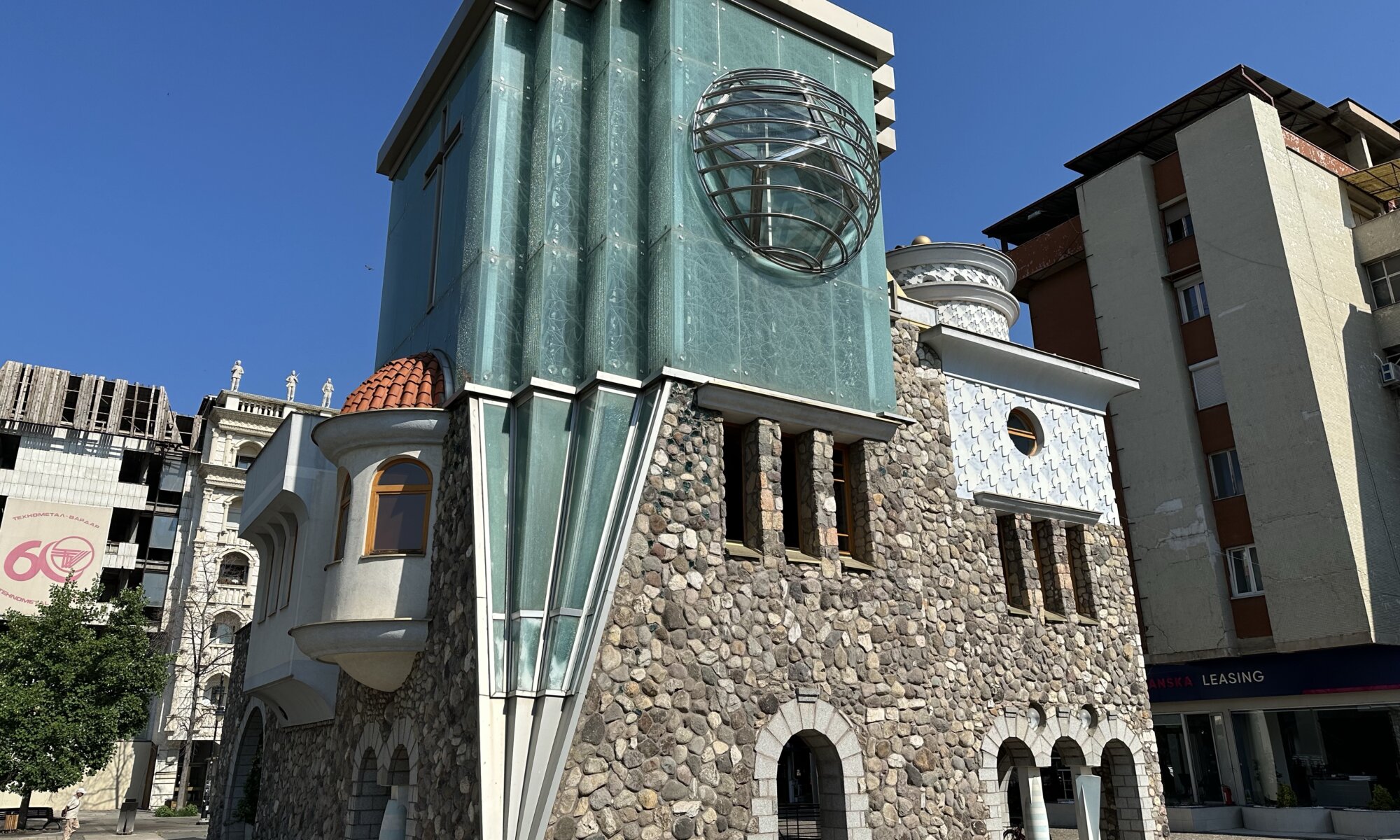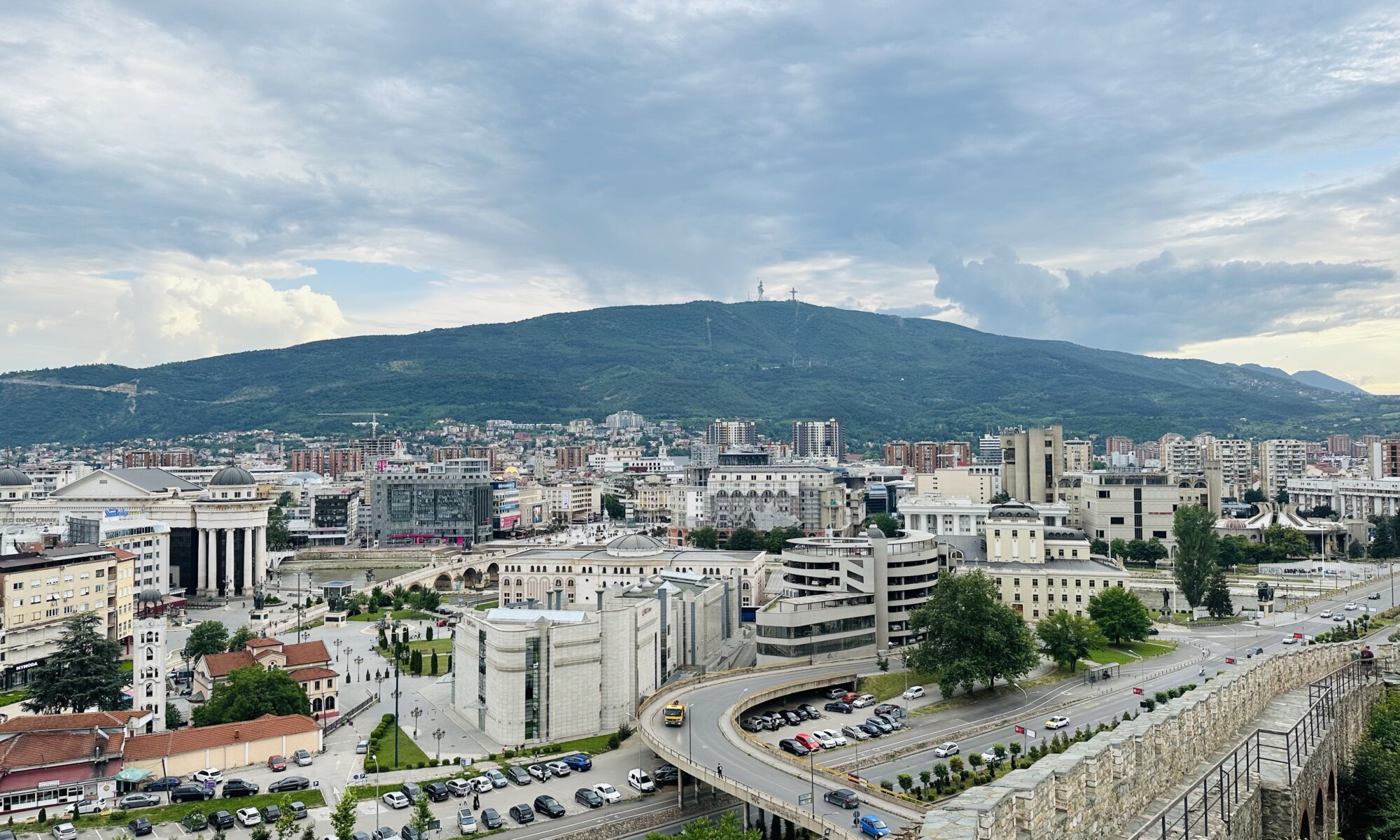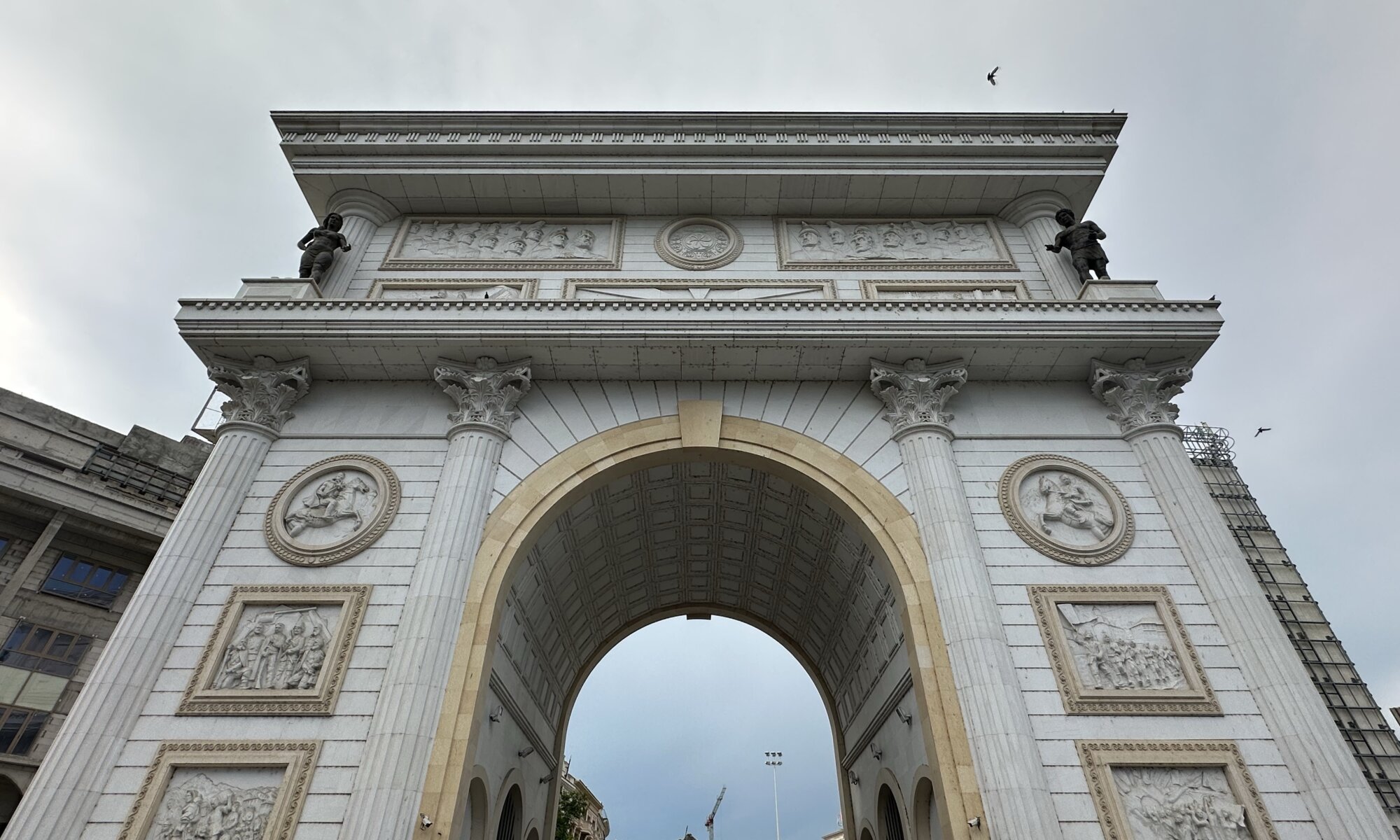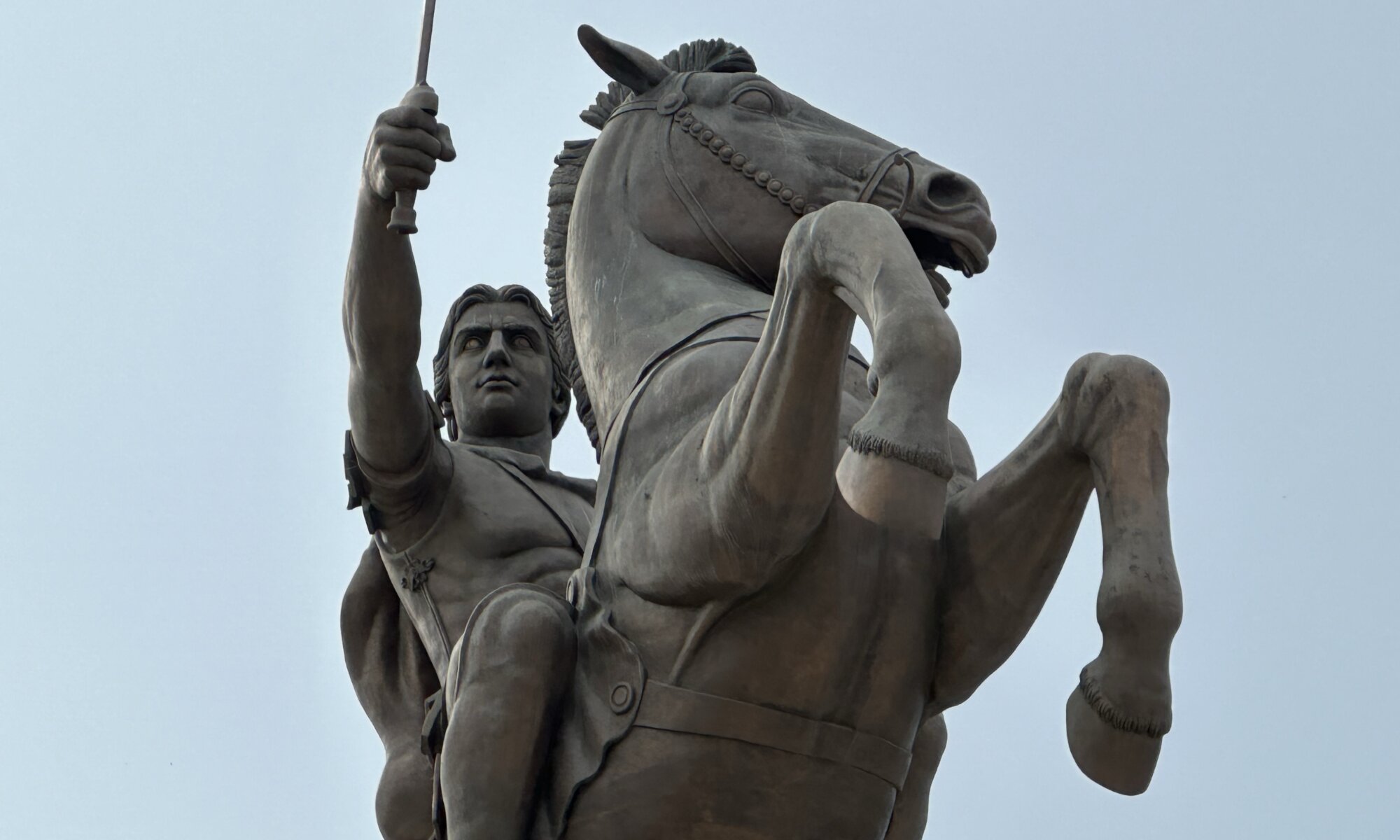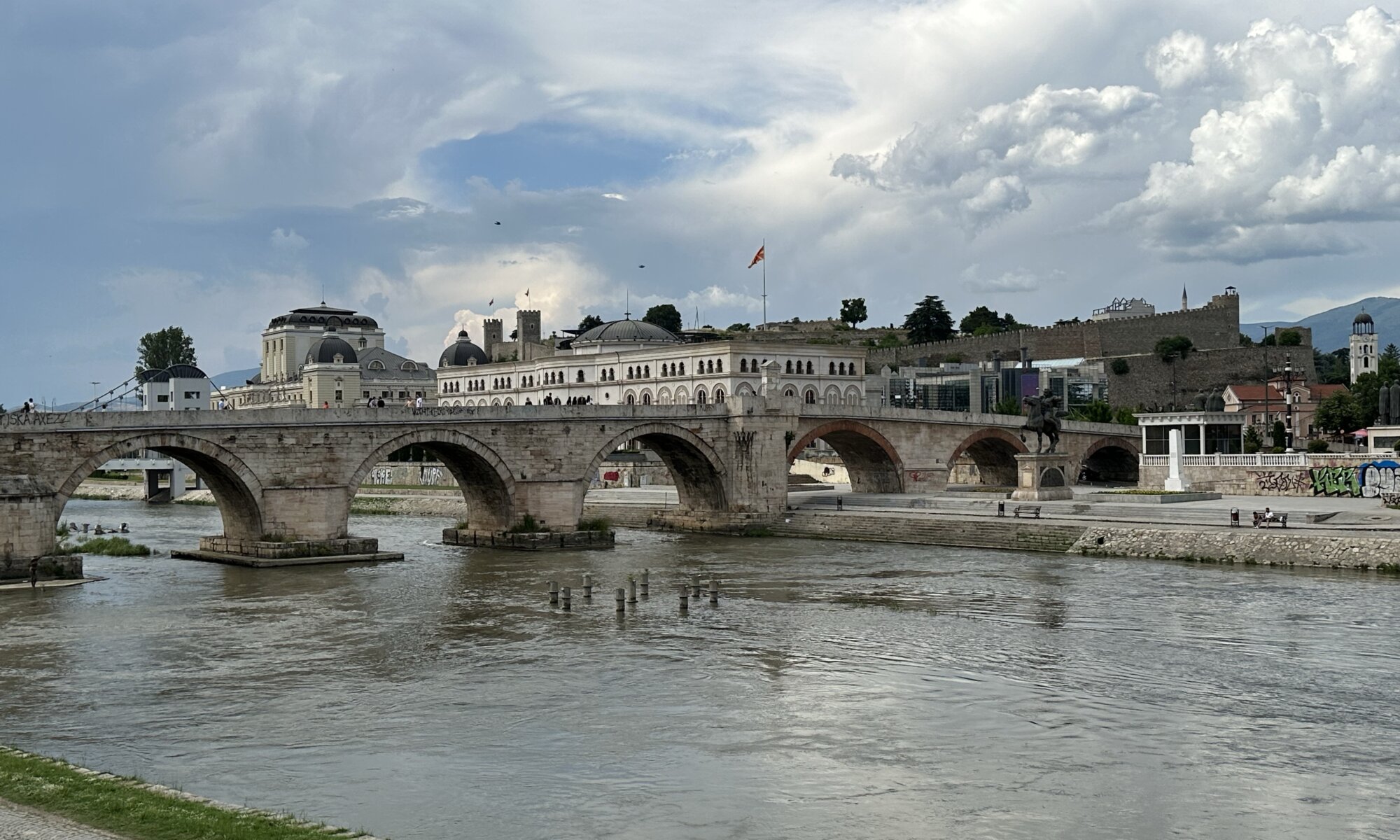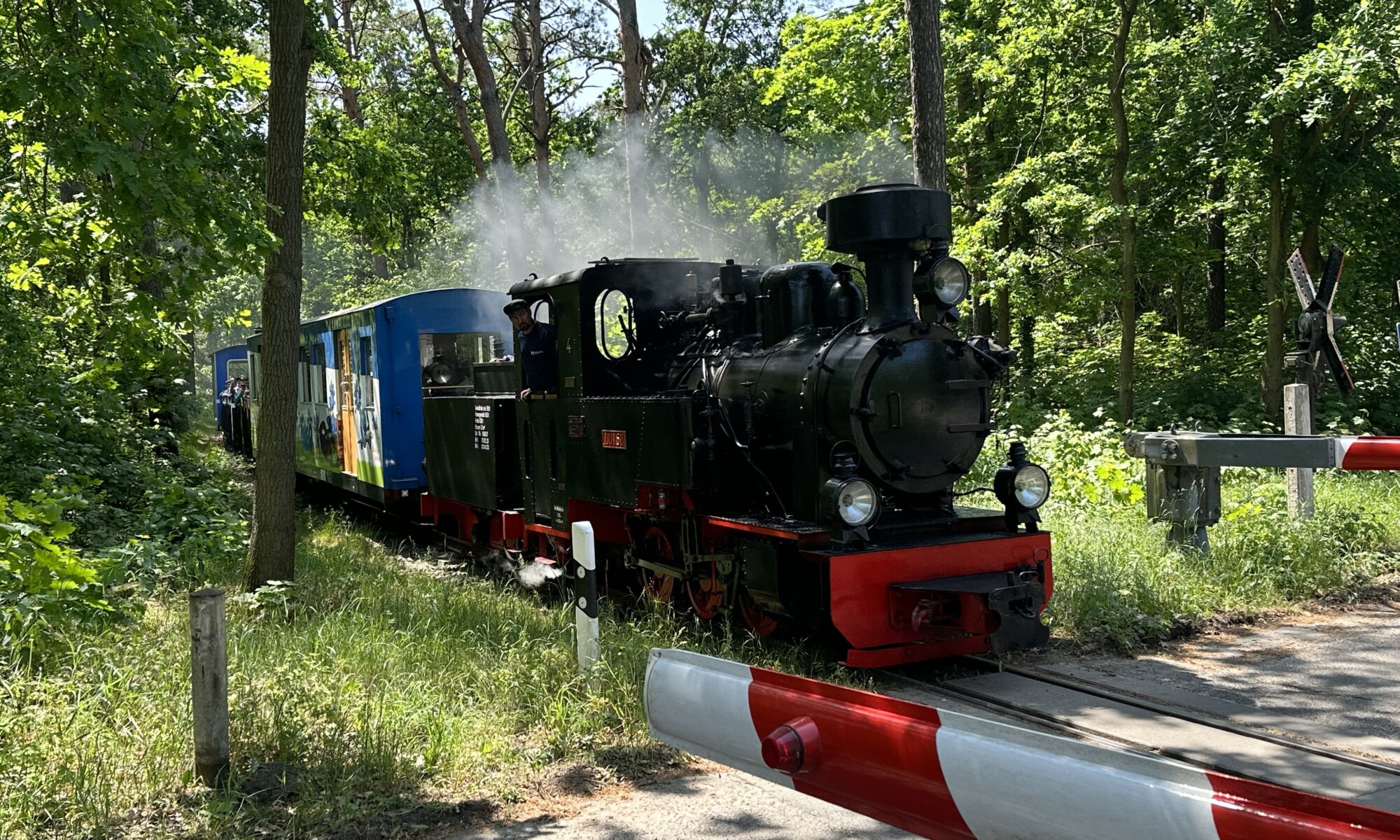Just fifteen kilometers afar from Скопје you can discover the Матка canyon. Here the river Treska is floating through high mountains (up to 700 meters high) and a dam for generating electricity formed a beautiful lake. People get there to take a boat tour, to rent a canoe or to simply hike through the valley. The place also offers a wonderful restaurant with good views on the lake and two tiny cloisters hidden in the mountains.
Continue reading “Matka canyon”Sv. Pantelejmon
I love Byzantine churches and the best ones are those hidden in secluded areas. One of these is the church Sv. Pantelejmon at Горно Нерези, not far from Скопје in the Vodno mountains. It was three times painted with the oldest layer being from the 12th century CE; the newest one from the 19th century has been completely removed to reveal the ancient masterpieces. The specialty of this church built in 1164 is that it shows the depicted characters as persons with emotions which is pretty unusual.
Continue reading “Sv. Pantelejmon”Mileniumski Krst
Скопје, North Macedonia, is beautifully located in a valley surrounded by mountains. The Hausberg of the city, reachable pretty fast from the center, is the Vodno. It is located in the southwest and the highest point (Krastovar) is 1066 meters high. On top of it you can find the Millennium Cross (or Mileniumski Krst) – a 76 meters high cross made of steel and illuminated at night. It was placed there in 2002 as a symbol of the new millennium.
Continue reading “Mileniumski Krst”St. Clement of Ohrid
The church Sv. Kliment Ohridski at Скопје, North Macedonia, has a special architecture: with its 36 meters wide cupola and round shapes it could be confused with a mosque. But once you get closer you see the richness in decoration and the icons typical for an orthodox Christian church. It was opened in 1990 (with construction works already starting in 1972) and is therefore a rather young church.
Continue reading “St. Clement of Ohrid”Mother Teresa
The Catholic nun Mary Teresa Bojaxhiu is known throughout the world as Mother Teresa, as an example for a person who has dedicated her life to help the poor. Under the name of Saint Teresa of Calcutta she has been officially declared a saint of the Catholic church mostly for her work in India. But where did she come from? The Albanians see her as a national hero, in Kosovo they name churches and airports after her. The people remember her at Скопје, North Macedonia. But maybe we also need to connect her to the Ottoman Empire.
Continue reading “Mother Teresa”Kale
The fortress of Скопје is called Kale (the Turkish word for fortress) and located on a hill next to old city center. It was built in the 6th century by Byzantine emperor Justinian I. It became important over time as Скопје was the capital of the First Bulgarian Empire, but also the Serbian emperor was crowned there in 1346. When in 1963 an earthquake destroyed Скопје to large extent, also the fortress received massive damage. Kale has been rebuilt to some extent, but still today excavation works take place there.
Continue reading “Kale”Porta Makedonija
Leaders seem to love triumphal arches. If you don’t have one like at Paris, you built one like at București. But it is rather seldom that you really invest in such monument nowadays. The Porta Macedonia at Скопје is an exception to this rule created in 2012 during the highly disputed project Skopje 2014 reshaping the city center. It commemorates the 20th anniversary of the young state of North Macedonia.
Continue reading “Porta Makedonija”Alexander the Great
Once you’ll reach the Macedonia Square of Скопје you will be astonished: in its center there is a big column reminding one of the Trajans column at Roma, surrounded by lions and large statues of soldiers. And on top is a giant statue of Alexander the Great on his horse Bucephalus. One of the largest monuments I’ve ever seen in a city center and one the creates a conflict with the neighbor Greece as both countries fight about whom the heritage of this leader belongs to.
Continue reading “Alexander the Great”Three bridges
The old and the new city center of Скопје, North Macedonia, are connected by an ancient bridge, the Stone Bridge (Камен Мост). Already in Roman times a bridge was crossing the river Vardar here. The current structures are of Osman origin: they were created by Mehmed the Conqueror from 1451 on. In 1944 the German Wehrmacht wanted to blow up the bridge which could be prevented – and therefore the bridge is still today a town’s landmark of the city and part of the city arms.
Continue reading “Three bridges”Parkeisenbahn Wuhlheide
The Wuhlheide is a forest within the city of Berlin, Germany, belonging to the city quarters Köpenick and Oberschöneweide. It is named after the river Wuhle which runs into the river Spree and formerly formed the border of the forest. The area contains an open air stage and a family recreation center (the Freizeit- und Erholungszentrum, FEZ). This is based on the former usage by the GDR youth organization, the Pionierorganisation Ernst Thälmann. And it contains a former Pioniereisenbahn in the Sowjet tradition; a narrow-gauge railway operated by children and teenagers who had fun while being trained to became a railway worker.
Continue reading “Parkeisenbahn Wuhlheide”